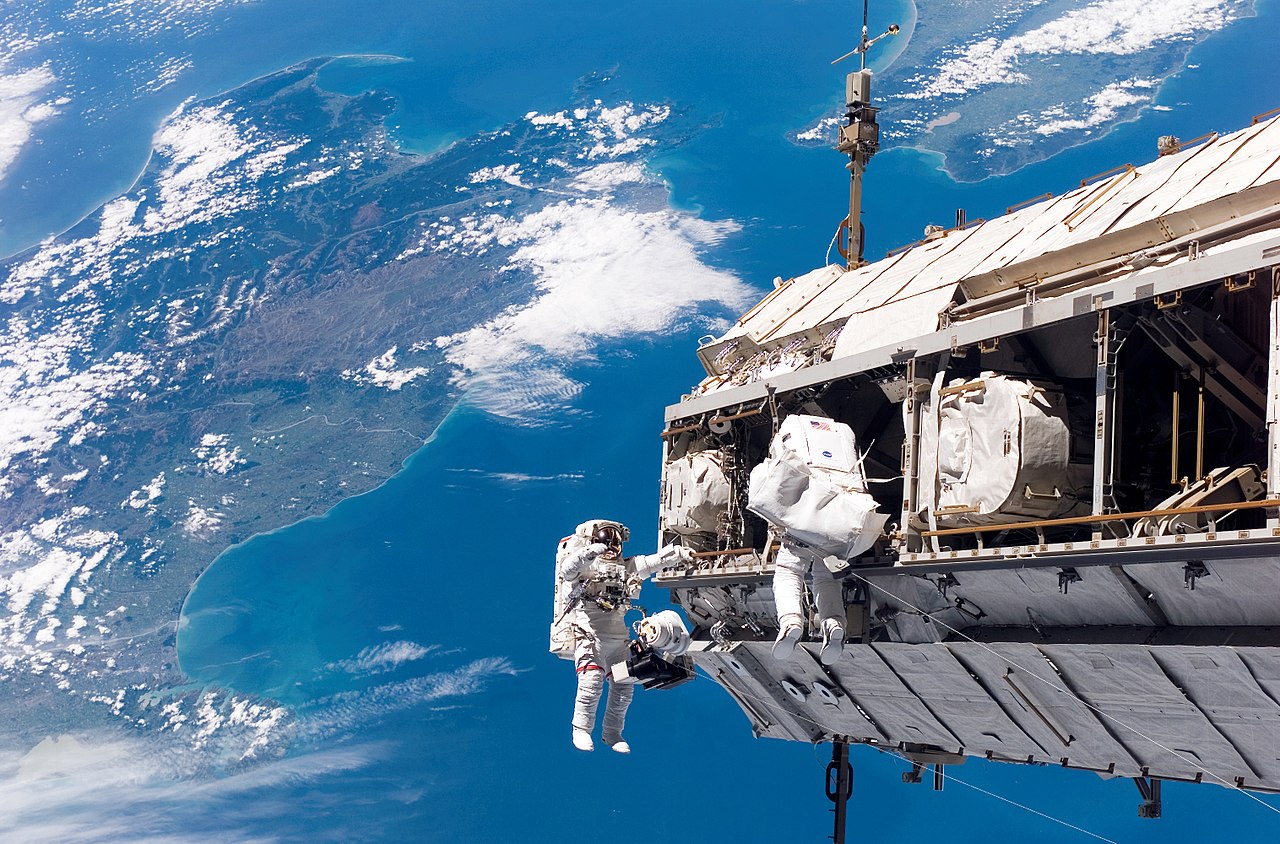Space Stations

Space Station
Credit: NASA
Did you know there are always humans in space? Since 1971, men and women have been living for months at a time on space stations. These are spacecraft large enough for several astronauts to live there at once. Space stations orbit the Earth above the atmosphere, travelling at thousands of miles an hour. Because they are so massive, space agencies launch space stations in small pieces. The crew use robotic arms to help them put the pieces together in space.
Explore some space stations like the ISS, Mir, Skylab and Tiangong.
Why do astronauts float in space?
On space stations, the crew live in microgravity which means everything floats! This happens because the station is in free fall around the Earth. Everything inside falls at the same rate - it does not matter how much mass it has. The station, its crew, and any objects on board fall together. So if you are inside, everything floats with you.
But there is still gravity in space. Space stations fall around the Earth because of gravity and momentum. The space station's momentum wants to carry it off into space in a straight line. The Earth's gravity pulls it back towards the Earth. The constant tug of war between these forces creates a curved path. Use our orbits demo to experiment for yourself!
What are space stations used for?
Space stations are science labs in space. Doing experiments in space lets us study the effects of weightlessness. Long periods of time in microgravity affects the human body. The crew's muscles and bones get weaker if gravity isn't making them work as hard. So space agencies use space stations to study weightlessness before they send people on long missions. They also test the technology that a crew will need on a long mission to Mars. Things act and behave in strange ways in space. Without the pull of gravity, flames are rounder and crystals grow better. Comparing the results to what we see on Earth increases our science knowledge. We also use space stations to study our own planet from above.

